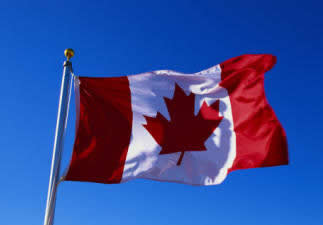Did Sir Francis Drake spend a summer in Whale Cove?
Some historians think famous explorer's "Nova Albion," in which the Golden Hind stopped for repairs and provisions in 1579, is in Oregon, not northern California.
EDITOR'S NOTE: A revised, updated and expanded version of this story was published in 2017 and is recommended in preference to this older one. To read it, click here.
Whale Cove as it appears today, viewed from the headland at the
southern end of the cove's mouth. (Image: F.J.D. John)
By Finn J.D. John — June 8, 2009
A British factory manager turned historian says Oregon probably has another name, an older name:
Nova Albion. That’s the name Drake gave to the little cove he spent the summer of 1579 in, repairing and reprovisioning his ship, the Golden Hind, for his subsequent famous trip around the world — back home to Britain via the Pacific and Indian oceans.
Drake’s official records say Nova Albion was much farther south — near San Francisco — and several bays and inlets down there claim the distinction for themselves.
But Bob Ward is convinced they’re wrong. Here’s what he says happened:
Ward thinks Drake was on a secret mission to find a usable northwest passage through northern Canada. If this was the case, Drake would naturally have sailed as far north as he could — until he found something that looked like a northwest passage. Something like, for instance, the Strait of Juan de Fuca.
But having found it at the wrong time of year to use it, Drake did not try to enter it. Or perhaps something he heard from the Native American tribes up in what is now British Columbia that made him think the better of it. In any case, Ward says, the Golden Hind needed some repairs and maybe some more provisions, so Drake sailed south along the coast, looking for a good place to spend a few months, and ended up in a cozy little cove that Drake dubbed Nova Albion, after the Latin name for Britain. From this spot, he then set out across the Pacific Ocean for his famous trip around the world.

A side-by-side comparison of Drake's drawing
of Nova Albion, above, and a satellite image
of Whale Cove from Google Earth. The
similarities are striking, although the
differences are also noticeable.
When he returned, Ward suggests, Drake conspired with Queen Elizabeth to lie about the location so that the Spanish wouldn’t find out how close he was to finding that Northwest Passage. It is known that his sailors were sworn to secrecy about the entire voyage.
The general story of this adventure – sailing north, turning around, finding a cove – isn’t in dispute. Nor is Drake’s secret mission, to find the Northwest Passage, a controversial concept. It’s the location. Most of the records from the time have Drake sailing north to around Cape Arago, then turning around and setting up his Nova Albion camp at Campbell Cove or Drakes Bay near Bodega Bay.
Needless to say, the Campbell Cove/Drakes Bay folks were not pleased by this new and competing theory. “He’s working on a fantasy,” scoffed a former president of the Drake Navigators Guild in California.
Less understandable was the reaction of a former director of the Oregon Historical Society, who not only dismissed the theory but publicly speculated that Ward had a personal financial interest in redirecting Drake’s story to Whale Cove — an insinuation that I haven't been able to find any evidence for. Maybe he knows something I don't.
Subsequently, a Canadian, R. Samuel Bawlf, produced a third theory in which New Albion ends up being Comox Bay on Vancouver Island.
None of these three sites has yet yielded definitive proof. A plaque was found at the California site, but it turned out to be a forgery. A very old English shilling coin was found near the Oregon site, but it wasn’t buried on the beach; it had apparently been traded to Native Americans. This could just as easily have been done by a Spanish explorer as an English one; the two countries were busily pillaging one another’s ships and settlements at the time. Ward has found other evidence, but it’s all similarly circumstantial: a sword here, a couple cutlasses there, possible ballast rocks in the bay.
So despite the vigorous protests by the proponents of each of these candidates, the true location of New Albion remains a delicious mystery.
But if either Bawlf or Ward is right, it was Drake, not Captain James Cook, who “discovered” what is now Canada. And in either case, there’s a strong possibility that Drake was the first European to set foot on Oregon soil.
(Sources: Back issues of Eugene Register-Guard (1995) and Salem Statesman Journal (1998); Morris, Elizabeth &al. Oregon (Moon Handbooks). Berkeley, Calif.: Avalon, 2007)
Afterword:
I do have another observation to contribute to this debate, though, and it's simply this: Sailing a square-rigged ship south along the Northwest coast is a stone-cold bugger. The prevailing winds blow out of the southwest. Making progress upwind in one of those old vessels is no easy thing, and in some designs is simply impossible. I'm not sure it's very likely that Drake would have sailed more than a few dozen miles south in such conditions, since he really didn't have to. So to me, the Comox Bay site seems like the most likely candidate, or perhaps it's another small bay that hasn't yet come to anyone's attention. But, as with so many such things, we probably will never know. —fjdj
-30-













